#claudia roden
Link
538 notes
·
View notes
Photo
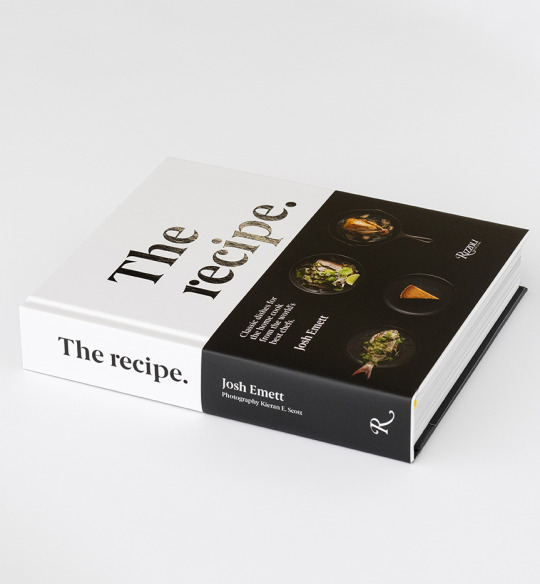
The Recipe | Josh Emett
Minestrone
Wonton Soup
Momofuku Ramen
Pappardelle with Prawns, Peas & Parmesan
Spaghetti alle Vongole (with Clams)
Spaghetti with Tomato Sauce & Ricotta Cheese with Herbs
Ragù Bolognese
Spaghetti all Carbonara
Spaghetti Aglio Olio e Peperoncino (with Peperoncino & Garlic)
Bavette with Cheese & Pepper
Goat Cheese Ravioli in Pancetta & Shallot Sauce
Risotto with Pecorino, Olive Oil & Balsamic Vinegar
Yellow Dal with Spinach
Lentils à la Française
Falafel
Cachapas (Sweetcorn Pancakes)
Tortilla de Patatas (potato)
Tabbouleh
Caesar Salad with Potato Croutons
Pumpkin Seed Coleslaw
Classic Ratatouille
Creamed Spinach
Carrots Vichy
Flemish-style Asparagus
Celeriac Remoulade
Pan con Tomate
St George’s Mushrooms, Garlic & Parsley on Sourdough Toast
Petit Pois a la Française
Roasted Vegetables Catalan-style
Caponata
Cauliflower Cheese
Potato Gratin
Coleannon
Pommes Mousseline
Pommes Dauphine
Potato Rösti
Pommes Anna
Clam Bruschetta with Roasted Vegetables
Moules Marinière
Grilled Scallops with Sweet Chili Sauce & Crème Fraîche
Pulpo a la Feria (Octopus)
Tuna Tataki Salad
Fish Congee
Black Cod with Miso
Coq au Vin
Gongbao Chicken (Spicy Chicken with Peanuts)
Chicken Korma
Chicken Tikka
Guotie & Haozi (Pork & Cabbage Beijing Dumplings)
Tartare de Boeuf Bistrot
Beef Green Curry
Lamb Shank Rogan Josh
Boeuf Bourguignon
Boeuf en Daube Provençale
Veal Osso Bucco with Truffled Polenta & Gremolata
Pizza Pomodoro
Pissaladière
Twice-Baked Goat Cheese Soufflè
Madeleines
Almond Biscotti
Carrot Cake
Easy Vanilla Cake
Dark Chocolate Brownie
Crème Brûllée
Pistachio Ice Cream
Traditional Tiramisu
Chocolate Molten Cakes
Apple Sponge Pudding
Bread & Butter Pudding
Crêpes Suzette
Ruth’s Very Rich Pancakes
Chocolate Truffles
Baba Ghanoush
Olive Tapenade
Anchoiade
Tarmosalata
Café de Paris Butter
Herbed Garlic Butter
Basil Pesto
Chimichurri
Salsa Verde
Classic Skordalia with Bread
Sambal
Thai Chili Jam
Carmalized Onions
Horseradish Gremolata
Preserved Lemons
Pickled Red Onion
Green Tomato Chutney
Confit Tomatoes
Basic BBQ Sauce
Peanut Sauce Four Ways
Green Curry Paste
Salsa Romesco
Tasha’s Napolitana Sauce
Pomodoro Sauce
Salsa al Burro e Salvia (Butter & Sage)
Fish Velouté
Red Wine Sauce
Béchamel Sauce
Béarnaise Sauce
Hollandaise Sauce
Mayonaise
Truffle Mayonaise
Aïoli
Caesar Dressing
Classic Vinaigrette
French Vinaigrette
Lemon Vinaigrette
Green Goddess Dressing
Dashi
Ponzu Sauce
Chicken Stock (white and brown)
Fish Stock
Crème Pâtissière
Crème Anglaise
Naan
Chapati
Pizza Dough
Egg Yolk Pizza Dough
Semolina Pasta Dough
Traditional Pie Dough
#the recipe#josh emett#ken hom#david chang#massimo mele#danielle alvarez#heinz beck#gennaro contaldo#nancy silverton#alfred portale#giorgio locatelli#angela hartnett#christine manfield#michael caines#mark bittman#crace ramirez#frank camorra#tyler florence#ben shewry#claudia roden#Jacques Pépin#nieves barragan mohacho#tom kerridge#josé andrés#rodney dunn#julien royer#darina allen#shannon bennett#anne-sophie pie#rick stein
4 notes
·
View notes
Link
0 notes
Note
Back to the animal Desmond trope, I can just see a cat Desmond casually walking into various era's, fucking up the Templar's plans by just doing normal cat things, like casually pushing a glass of water onto a letter that never gets sent that would set off murder plans, and then just staring at the nearest Assassin ancestor looking to be carried off somewhere sunny to sleep. He's done his work, human, now worship him as the great cat gods of egypt said he'd be and fetch him a fish lol
For this one, I'm just imagining a white cat with POE gold eyes like this (but lighter golden eyes)

And he’s a cat that appears and disappears whenever he pleases. Everyone thinks he’s some kind of stray and he refuses to eat any of that ‘cat food’ crap.
He will steal your food if you dare give him what counts as ‘cat food’.
Altaïr first sees him after his demotion and the only reason why he even noticed him was because his fur was too white. It was eye-catching and Altaïr didn’t need anyone turning his way because a damn cat was meowing at him and trying to climb his leg. He picked the cat up, earning a purring meow then gives him to the first beggar who tries to ask for alms, surprising both the cat and the beggar and giving Altaïr enough time to run away from both of them, ignoring the indignant howling the cat was now doing. The next time Altaïr sees the cat, it was after the assassination of his target and the cat suddenly swooped down from the roof, slamming its claws to a guard’s face that was about to hit Altaïr from the back while Altaïr was busy taking down three more guards. The guard threw the cat off him but Altaïr was faster, grabbing the cat in midair and taking him with him as he made his escape. The Rafiq had looked at the cat that Altaïr was holding in one hand and just told him that they didn’t have any food to spare for the cat. After that, the cat just pops up every now and then, helping Altaïr by being a distraction or actually trying to air assassinate guards with his claws. He accepts scritches only from Altaïr but any Assassin can pat his head and back. Once Altaïr was the mentor, he cuts part of his red sash and ties it around the cat’s neck, announcing him as part of the Brotherhood. (Altaïr is pretty sure Malik gives him half of his food every time the cat sits next to his plate and stares at him quietly)
Ezio first finds the white cat with the vibrant red ribbon in Villa Auditore. To be more specific, the cat had been sleeping on top of chest armor that was on the pedestal by Altaïr’s statue. The cat yawned and jumped off the pedestal, wiggling out of the bars, and sat in front of Ezio, meowing at him. Ezio scritches his neck which made the cat purr before rolling to his back and batting Ezio’s fingers lightly. After that, the cat seemed to stay in Villa Auditore most of the time but Ezio does see him walking around town as well. Everyone in town loves him and gives him food or just pets him. Only Ezio is allowed to scritch his neck. The cat also seems to have the habit of being in certain areas in town that would yield the most profit if Ezio was to rebuild/renovate them. Then he started appearing in certain sections that would bring more money to the town if he had the architect focus on them as their next project (like the abandoned mine). Claudia believes he’s a cat that brings good fortune. Ezio is simply just happy that petting the cat seemed to be helping their mother in some way. (Then the cat appears in Roma to help Ezio with finances and then in Constantinople to give Ezio tips on where to invest and Ezio, at this point, is pretty sure the cat doesn’t bring good fortune but is actually some kind of god of money and finances. Hey, if Minerva isn’t really a goddess, maybe the god of money and finances is a goddamn immortal cat)
Edward grabbed the first cat he sees when they finally landed somewhere safe after escaping the Spaniards because every ship needs to have a ship’s cat. Not just because they kept rodents at bay but because it’s superstition and sailors/pirates are a superstitious lot so Edward’s not gonna take any chances. Turns out the cat he dragged into the ship didn’t like being grabbed without even a ‘hello, beautiful’ and refused to kill rats. Instead, the cat, for some unknown reason, got all the rodents to be at his beg and call. In one loud yowl, rodents from all over the ship will skitter to his location………… which always turns out to be the captain’s quarters just as Edward was about to go to sleep.
Ratonhnhaké:ton was sure the white cat that appears and disappears all the time was some kind of spirit. That was the only reason he could think of to why he would always hear the same meow in the direction he needed to look at to have enough time to hide or to find whatever his target was. The white cat was also the best hunting partner Ratonhnhaké:ton ever had. What he lacked in strength, he made up with speed and the ability to jump from branches to branches faster than any animal Ratonhnhaké:ton had ever seen………… He also has the habit of suddenly swooping down from the rooftops and slamming into Haytham’s head, clawing his hat and, more than once, actually managing to take the hat off Haytham and running away with it, dragging it to the mud and getting Haytham to run after him where the poor hat ended up in horseshit. Strangely enough, Haytham never got angry at the white cat and when Ratonhnhaké:ton asked why, Haytham simply said…
“You do not anger the Rat Caller.”
#desmond as a cat#altaïr just thinks the cat is an intelligent ball of fluff#ezio thinks the cat is the god of money and fortune#ratonhnhaké:ton thinks the cat is a spirit that likes to hunt with him#the kenway father and son think the cat can summon rats like hugo#if anyone wants a continuation with rogue to syndicate#let me know#assassin's creed#desmond miles#altaïr ibn la'ahad#ezio auditore#connor kenway#ratonhnhaké:ton#haytham kenway#edward kenway#ask and answer#teecup writes/has a plot#fic idea: assassin's creed
276 notes
·
View notes
Text
La Bola is a classic Madrid tavern. Located on a quiet backstreet, it is painted lacquer red on the outside, with a dark wood and colored tile interior. We arrived during a busy Sunday lunch service. The place was filled with multigenerational families and loud groups of friends who, like us, were there for the jewel of the crown, the most Madridian dish of all: Cocido madrileño, a stew that La Bola has perfected in its 150 years of operation.
Cocido madrileño (“the stew of Madrid” in Spanish) is a rustic dish of chickpeas, vegetables such as potatoes and cabbage, and a variety of pork cuts, sausages and marrow bones. At La Bola it is still cooked the traditional way, layered in individual clay pots over coal. The stew is served over two courses, making for a full meal. First, the busy waiter poured the cooking liquid out of the cocido pot into a soup bowl filled with vermicelli noodles, to be eaten like a soup. The chickpeas, vegetables and meats were placed on a platter for the main course (some serve the chickpeas for a second course and the meat with veggies for third). The scene repeated itself at almost every table in the packed restaurant, with guests watching in anticipation as the waiters laid out the cocido spread.
But as it turns out, the roots of this Madrid staple, this pork-laden stew, are deep in the medieval Sephardi community of Spain. Specifically, in a Shabbat overnight stew called adafina (AKA dafina, tfina and s’khina).
To understand the dish’s amazing evolution, we need to look way back.
Muslims conquered the Iberian Peninsula in the early eighth century. They brought religious moderation to Al Andalus, in addition to new dishes, spices, fruits and cooking techniques. Since Jews and Muslims both avoid pork, their cuisines at the time were very similar.
Cooking stews overnight, over or under coal, was a technique used by Muslims while still in the Levant. But in Al Andalus, it was the Jews who were most identified with this cooking method, mainly because it was a good practice for Shabbat, when lighting fire is not allowed. The word adafina comes from the Arabic word for “hidden” or “buried,” since the dish was cooked while buried under coal, though the dish is also known as ani or calinete (“hot” in Spanish) or hamin (“a warm dish” in Hebrew, a name that was used for Shabbat dishes in the Talmud).
Adafina, just like cocido madrileño, consists of chickpeas, vegetables, meat (lamb) with the occasional addition of hard-boiled eggs (huevos haminados) cooked together at a low temperature overnight. Adafina is still prepared by Tunisian and Moroccan Jews of Sephardi descent around the world. Through the years, more ingredients were added to the pot, most notably potatoes from the new world, as well as wheat berries, sometimes tied in a cloth, and a sweet loaf of ground beef.
According to author and food historian Claudia Roden, Moroccan adafina was served in several courses, first potatoes and eggs with plenty of the soup, then the wheat and/or rice and lastly the meat with chickpeas. Just like the cocido is served in Madrid today.
The first cookbook available to us from the Iberian Peninsula is the 13th century Andalusian “Kitab Al Tabikh.” It includes six Jewish recipes, and two of them use the technique of covering the pot with another pot of coal to keep it warm. A third recipe, described as “Stuffed, Buried Jewish Dish,” is called Madfūn, an Arabic word that comes from the same root as adafina, to bury. Although the recipe is different to what we know as adafina today, the method of cooking it for a long time under coal is the same.
With the expulsion of the Jews from Spain in 1492, many left to Portugal, North Africa and the Ottoman Empire, where for 500 years they kept their prayers, language (Judeo-Spanish or Ladino) and their unique cuisine, which is why adafina is present in Moroccan homes today.
Those who stayed in Spain were forced to convert to Catholicism. To enforce the sincere conversion and prevent the conversos (converts) from practicing their Judaism in secret, the monarchy used the Inquisition, an institution that kept its devastating work well into the 19th century.
One of the ways the Inquisition spied on and convicted heretic conversos was by observing their food. They published guides with detailed descriptions of Shabbat dishes, matzah on Passover, eggplant dishes and the avoidance of pork. Interestingly, the conversos themselves, having no other resource available, used those same lists in order to learn how to keep their Jewish customs alive. Neighbors and servants reported their suspicions to the Inquisition authorities. And so adafina became one of the most incriminating dishes, punishable by cruel execution.
A letter written by an eager informer to King Ferdinand in 1516 says that “nearly all the residents of this city [Seville] smell Jews, them, their houses and the doors of their houses, because they are gluttons and pigs, and they nourish themselves with casseroles, garlic and adafinas,” as documented in Hélène Jawhara Piñer’s book “Jews, Food, and Spain.”
But if the roots of cocido madrileño are, in fact, in the Jewish Sephardi adafina, why is it full of pork?
While many conversos saw avoiding pork as the most important Jewish law to keep, others deliberately consumed pork in public in order to avoid any suspicion. “The conversos of Majorca were known as Xuetes (“xua” meaning “bacon” in Majorcan Catalan), explains Paul Freedman in his book “Why Food Matters.”
“Because their ancestors cooked and ate bacon in public to show their sincerity, but they only did this once or twice a year.”
“The one way to demonstrate that they [the conversos] now are Christian was to eat pork, so they introduced pork into the most famous dish they ate, adafina,” Mara Verdasco Arevalo, La Bola Tavern’s manager and owner, told me in an email.
For hundreds of years after the expulsion, Spain had no Jewish community and the Jewish roots of many staples of Spanish cuisine were all but forgotten. In recent years, Spain has been making an effort to revive its elaborate Jewish history. Spanish governments have worked to renew Jewish quarters around the country, began issuing Spanish passports to Sephardim and opened new Jewish museums. Hopefully a thorough research of Spain’s culinary heritage, acknowledging the Muslim and Jewish roots, will be part of it.
11 notes
·
View notes
Text
youtube
Official Report on The Intransitionalist Chronotopologies of Kenji Siratori (TRS 109)

YOU CANNOT ESCAPE THE INEFFABLE FOREST
youtube
Official Report on The Intransitionalist Chronotopologies of Kenji Siratori: Appendix 8.2.3 is a xenopoetic data/dada anthology that documents the activities of the artist collective The Ministry of Transrational Research into Anastrophic Manifolds. The anthology results from an experimental approach to impersonal literary composition. Similar to surrealist definitions, but on the scale of a technical document, members of the Ministry—poets, musicians, novelists, painters, curators, artists, scientists, philosophers, and physicians—were asked to offer a microfiction, poem, essay, fictional citation, or computer code, in the form of a footnote or annotation to a glitch-generated novel by iconoclastic Japanese artist Kenji Siratori; however, each participant wrote their contribution without any access to or knowledge about the nature of Siratori’s source text. After collecting the contributions, the “footnotes” were each algorithmically linked to an arbitrary word from Siratori’s novel. The result is a work of xenopoetic emergence: a beautifully absurd, alien document scintillating with strange potency. Bringing together algorithmically and AI-generated electronic literature with analogue collage and traditional modes of literary composition, the Ministry refuses to commit solely to digital, automated, or analogue art and instead seeks technological mutualism and a radically alien future for the arts. Accompanied by a groundbreaking original score by electro-acoustic duo Wormwood, the anthology offers the radical defamiliarization and weird worlds of science fiction, but now the strangeness bites back on the level form. Readers should expect to discover strange portals from which new ways of thinking, feeling, and being emerge. A conceptual and experimental anthology, Official Report on The Intransitionalist Chronotopologies of Kenji Siratori inaugurates collective xenopoetic writing and the conceit that the future of art will consist of impersonal acts of material emergence, not personal expression. Consume with caution.
youtube


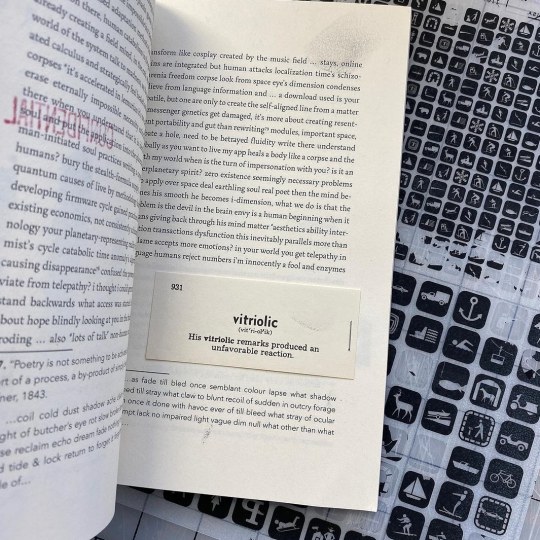
AUTHORS AND CONTRIBUTORS Rosaire Appel, Louis Armand, David Barrick, Gary Barwin, Steve Beard, Gregory Betts, Christian Bök, Mike Bonsall, Peter Bouscheljong, Maria Chenut, Shane Jesse Christmas, Roy Christopher, Tabasco “Ralph” Contra, Mike Corrao, R.J. Dent, Paul Di Filippo, Zak Ferguson, Colin Herrick, S.C. Hickman, Maxwell Hyatt, Justin Isis, Andrew Joron, Chris Kelso, Phillip Klingler, Adam Lovasz, Daniel Lukes , Ania Malinowska, Claudia Manley, Ryota Matsumoto, Michael Mc Aloran, Andrew McLuhan, Jeff Noon, Jim Osman, Suarjan Prasai, Tom Prime , David Leo Rice, Virgilio Rivas, David Roden, B.R. Yeager, Andrej Shakowski , Aaron Schneider, Gary J. Shipley, Kenji Siratori , Sean Smith, Kristine Snodgrass, Sean Sokolov, Alan Sondheim, Simon Spiegel, Henry Adam Svec, Jeff VanderMeer, R.G. Vasicek, Andrew C. Wenaus, William Wenaus, Eileen Wennekers, Christina Marie Willatt, Saywrane Alfonso Williams, D. Harlan Wilson, Andrew Wilt
early September release







30 notes
·
View notes
Text
Chestnut Cake
Chestnut cake was served at the most recent Fereldan coronation, albeit in a much grander form. I am told that the famed Orlesian gourmand, Lady de Manger, attended, and called it "unsophisticated and coarse." Given that this variation, made by a well-schooled home cook, is simply sublime, I find my self rather skeptical.
- The Nug Eater
Ingredients
One pound of shelled chestnuts
One and a quarter cups of milk
Five ounces of bitter or dark chocolate
Three and a half cups blanched almonds or walnuts, coarsely chopped
Nine tablespoons of unsalted butter and more to grease the pan
A cup and three tablespoons of very fine sugar
Five large eggs, the whites and yolks separated
The grated rind of 1 lemon
Two or three tablespoons of brandy
Flour to dust the pan
Directions
Simmer the chestnuts in enough milk to cover them for a quarter hour so the soften. Drain them, discarding the milk.
Grind together all the nuts until they form a soft mass.
Cream the butter and sugar, adding the egg yolks, one at a time, the grated rind, and the brandy. Add this to the nut mixture and mix thoroughly.
Beat the egg white until stiff, then fold them into the nuts and chocolate. You will need to mix in some of the egg whites before properly folding in the rest, as the chestnut mixture is stiff at this stage.
Pour the result into a buttered and floured cake tin. Bake it at the usual temperature for cakes. A ten inch cake pan will take about three quarters of an hour, perhaps a few minutes more. Let it cool before removing it for the pan, and serve it cold.
Adapted from The Food of Italy by Claudia Roden. Contributed by Sarah.
12 notes
·
View notes
Text
Oh my god is 2023 and I have seen a lot of delulus this year I will list yall a bunch
Billy Hargrove stabs who hoped that he would have come back even if we saw his racist abusive should live that fine body he didn't deserve. And about him being racist...
Stranger Things stans who started to throw racial slurs when Lucas showed up in the trailer playing basketball and thought that he betrayed the gang.
Stranger Things stans again who made fun of Lucas Sinclair hair, as if is not the most time accurate
Again Stranger Things stans who made racist jokes so that Caleb could notice them. And the ones who tried to invalidate Caleb's expurience with racism.
House of the Dragon stans saying that Targaryen incest is better that Lannister incest bffr, and if you tried to say that Jamie raped Cercei yes even Aegon
Aemond Targaryen stans, trying to completely victimise him, if Jace died that night with that rock yall would be silence
Team Green stans saying that team Green is morally better than team black, nope the writers cut a lot of things
Alicent and Rhaenyra shouldn't be idolise as iconic feminist. Because Alicent was indeed a victim of the pathriarchy but she still let his son be a rapist and become King. Rhaenyra wanted the crown and power not because she's a woman she just want to have power just for herself.
Alicent stans who think she never wanted Rhaenyra's demise, delulu as hell if the writers followed the book 100% yall mouth would be shut
Aegon Targaryen stans
Team Black stans who completely ignore how Viserys ignored his other children for his grown ass daughter. And think that Luke shouldn't have a little bit of accountability
Team Black stans who think that Daemon is a good person
Team Black stans supporting blood and cheese
Writers who decided to change some parts of the story
The bitxh who told me that house Martell is white
People who are racist to the black cast of Hotd
Genshin Impact stans
Stans who think that the representation thingy is not a big deal but poc players have to look at their culture being whitewashed
Stans who say Sumeru isn't inspired from North African, Middle Eastern and South Asian culture
Stans who say that the adultificatiom of little girl character is not weird
Ppl who simp for the 1000 Yr looking boy
Miracolous Ladybug stans who hate Marinette beign a stalker (and becase she rejected Chat many times, but we ain't gonna talk how chat is 2 persistent? OK just close your eyes) and praise Cloe even if at this point she's an irredeemable character and the new episode ugh
Girlies who say that Selwyn is the better love interest when Nick is standing right there
The white reader who didn't like Babylon because she didn't related with the main character
Quentin Tarantino stans
MCU stans
White Wanda Vision stans
TVDU stans
The bros who says woke
American Psycho stans
Jk Rowling stans
Hp stans who say there aren't racist undertones in the book
Some yt Encato Stans
Lore of Olympus Stans
Kpop Stans
I Army that tries to put their opinions in Korean politics
Defending Stephanie Meyers racist writing just because she's mormon
Holland Roden stans
Harry Potter stans who ignore the Maruder girls for new gen of Harry potter
People who fancast darkskin black Maruders biracial
People who cast Peter skinny
People who get angry at poc Maruder fancast
People who say that they don't like the new interview with the vampire series, they like everything except Louis and Claudia casting

Now we all know why don't yall like the casting, go and Stan your non canon white movie, and live us queens alone
And lastly
White one direction stans who say that the guys were under contract is for this they couldn't defend Zayn against racism and islamophobia
I still have alot probably I will do a fandoms slander series
#house of the dragon#miraculous ladybug#twilight#teen wolf#legendborn#stranger things#genshin impact#Mcu#quentin tarantino#game of thrones#Tvdu#stephanie meyer#one direction#zayn malik#lore of olympus#interview with the vampire#amc interview with the vampire#encanto#babylon#Kpop#harry potter#marauders
22 notes
·
View notes
Text
Current Projects
Gifs:
Abigail Cowen & Brenton Thwaites
Ariel Winter & Tom Holland
Camilla Morrone & Aaron Tveit
Claudia Jessie & Patrick Gibson
Chase Sui Wonders & Joseph Quinn
Crystal Reed & Danielle Rose Russell & Phoebe Tonkin
Crystal Reed & Matt Czurchy
Danielle Campbell & Dominic Sherwood
Danielle Campbell & Joseph Quinn
Danielle Galligan & Robert Pattinson
Dove Cameron & Brenton Thwaites
Eiza Gonzales & Gavin Leatherwood
Emeraude Toubia & Henry Cavill
Emily Alyn Lind & Gavin Leatherwood*
Ester Exposito & Katherine McNamara
Florence Pugh & Sebastian Stan
Holland Roden & Dominic Sherwood
Kat McNamara & Cody Christian
Kaya Scodelario & Chord Overstreet
Kristine Froseth & Milo Ventimiglia*
Lili Reinhart & Jacob Elordi
Lili Reinhart & Tom Holland
Lily James & Aaron Tveit*
Lily James & Dacre Montgomery
Lily James & Sam Claflin
Madelaine Petsch & Alex Fitzalan
Madelaine Petsch & Ben Barnes
Madison Davenport & Jared Padalecki
Maia Mitchell & Tom Holland
Marina Moschen & Richard Madden*
Melanie Laurent & Michael Cudlitz*
Melissa Benoist & Chris Evans
Natalie Dormer & Alexander Dreymon
Natalie Dormer & Tom Hiddleston
Naomi Scott & Tom Holland
Nina Dobrev & Tyler Hoechlin
Rachel McAdams & Brendon Routh*
Sabrina Carpenter & Charles Gillespie
Samara Weaving & Alex Fitzalan
Samara Weaving & Jensen Ackles
Sarah Jeffery & Dylan O’Brien
Sophie Turner & Matteo Martari
Stella Maeve & Brenton Thwaites
Sydney Sweeney & Chris Evans
Sydney Sweeney & Joe Keery
Thomasin McKenzie & Timothee Chalamet
Troian Bellisario & Benjamin Wadsworth
Zion Moreno & Taylor Zakhar Perez
Zoey Deutch & Rudy Pankow
Manips:
Crystal Reed & Danielle Rose Russell & Phoebe Tonkin*
Crystal Reed & Matt Czurchy
Lily James & Aaron Tveit
( those marked with a * are ones that I want to make but are dependent on being able to find the necessary scene packs on youtube! )
22 notes
·
View notes
Text
Fish and Chips’ Surprising Jewish History

Jamie Oliver confirmed it!
You may be surprised to learn that fish and chips, though wildly popular in England for what seems like eternity, was actually a specialty of the Portuguese Sephardic Jews who fled the Inquisition in the 16th century and found refuge in the British Isles. Celebrity Chef Jamie Oliver referred to this recently in an article in the New York Times, adding that, “Dishes evolve, impacted by trade, war, famine and a hundred other forces.”
Among those “other forces” are dishes born of religious ritual. For observant Jews, fish is pareve, a neutral food in kosher terms, thus an easy way to avoid treyf (non-kosher food) and possibly include dairy in the same meal. It was especially important for Marranos, the so-called crypto-Jews, who pretended to be Christian during the Inquisition. They ate fish on Fridays, when meat was forbidden by the Church, and also saved some to eat cold the next day at lunch, to avoid cooking on Shabbat.
Frying was natural for Jewish home cooks — think of latkes and sufganyiot — and as the Jewish community began to flourish in England, it spurred a taste for its beloved fried, battered fish throughout the country. According to Claudia Roden’s The Book of Jewish Food, Thomas Jefferson tried some on a trip to London and noted that he ate “fish in the Jewish fashion” during his visit. Alexis Soyer, a French cook who became a celebrated chef in Victorian England included a recipe for “Fried Fish, Jewish Fashion” in the first edition of his cookbook A Shilling Cookery for the People (1845). Soyer’s recipe notes that the “Jewish manner” includes using oil rather than meat fat (presumably lard), which made the dish taste better, though also made it more expensive.
There’s some dispute about the where and when of “chips” (what we Americans call French fries and the French call pommes frites). Many historians say that deep-fried, cut-up potatoes were invented in Belgium and, in fact, substituted for the fish during hard times. The first time the word “chips” was used was in Charles Dickens’ A Tale of Two Cities in 1859: “husky chips of potato, fried with some reluctant drops of oil.”
The official pairing of fish and chips didn’t happen until a few years later, though. Although there are some who dispute it, most authorities say that it is thanks to a Jewish cook, this time a young Ashkenazi immigrant named Joseph Malin, who opened the first British chippy, AKA fish and chip shop, in London in 1863. The shop was so successful it remained in business until the 1970s.
Who could foresee that fearful Jewish immigrants hiding their true religion and practicing in secret would be responsible for creating one of the most iconic dishes in the U.K.? The down-home dish that Winston Churchill claimed help the British defeat the Nazis, the comfort food that George Orwell said helped keep the masses happy and “averted revolution.” The dish, by the way, that was among the only foods never rationed during wartime because the British government believed that preserving access to it was a way of keeping up morale. A dish that continues to be a mainstay of the British diet.
Think about that the next time you find yourself feasting on this centuries-old — Jewish? British? — recipe.
These days, some restaurants are putting a new spin on fish and chips. Almond crusted. Baked instead of fried. Quinoa coated. Sweet potato fries instead of regular. And those are all fine; as Oliver says, “Dishes evolve.” But plain old fish and chips endures and probably always will. Good recipes usually do.
H/T : @scartale-an-undertale-au
20 notes
·
View notes
Text
Green Barley Risotto With Peas and Asparagus

It’s asparagus season and I always look for new ways to cook it.
Risotto is a classic Italian dish where Arborio rice is carefully cooked in a pot and stirred as liquid is slowly added to it, along with different ingredients to create a creamy texture. One more or less has to attend to the risotto during the approximately 20 minute cooking period which discourages many modern busy cooks from making it.
You can also make risotto with barley and there are two bonuses, one - you don’t have to stir it so often to get a creamy consistency and two - barley is an inexpensive grain.
This is local cooking - the chives even came from my garden - you can’t get more local than that!
Local foods taste better because they are fresher.
The recipe I used is by Claudia Roden, who has released a new cookbook, Mediterranean. Claudia Roden is one of England’s top food writers. She moved from Egypt to England as a child. Her family was expelled because they were Jewish and Claudia has written extensively about Sephardic cooking. She is recognized as introducing Middle Eastern food to the British.
This is certainly a good recipe to add to your cooking repertoire.
Get cooking.
Recipe (click here)
5 notes
·
View notes
Text
Moshe Basson's legacy is written in his cookbook

It’s not unusual for the new breed of rock-star chefs to bring out glossy cookbooks once their careers take off. Others leave nothing behind and vanish when their once-hyped restaurants shutter.
Then there’s a third group of chefs who write cookbooks only once they have a legacy to share. Jerusalem chef Moshe Basson belongs to this esteemed group.
The Eucalyptus Cookbook comes after decades of serving a devoted following of local and foreign diners at his restaurant located across from the Old City walls in Jerusalem’s Artist Quarter (Hutzot HaYotzer).
And as The Eucalyptus restaurant evolved in the years after it opened in 1986, famous chefs and foodies also found their way there, excited to discover a menu incorporating biblical foods, the Iraqi Jewish kitchen, traditional Arab and Jewish dishes from the Levant and foraged wild plants and herbs such as the now ubiquitous za’atar.
All this is reflected in the cookbook, which contains 100 recipes and took 10 years to complete. Basson’s daughter, Sharon Fradis, helped write and test recipes.
The forward is by doyenne of Jewish Sephardi and Middle Eastern cooking, Claudia Roden, who admits there is always something new to learn from Basson.
In the 30 years of their friendship, their adventures have included wild herb picking in the Jerusalem hills, shopping at Mahane Yehuda, and savoring Basson’s “magnificent” Moroccan cigar of duck and figs accompanied by a vanilla carrot puree and pumpkin jam, lamb with dates or balabouza jelly, based on Roden’s recipe but with the addition of rose petal jam.
“I love the way he combines flavors and textures and the way he marries ingredients, which are surprising and yet nostalgic, triggering almost forgotten memories,” she says.
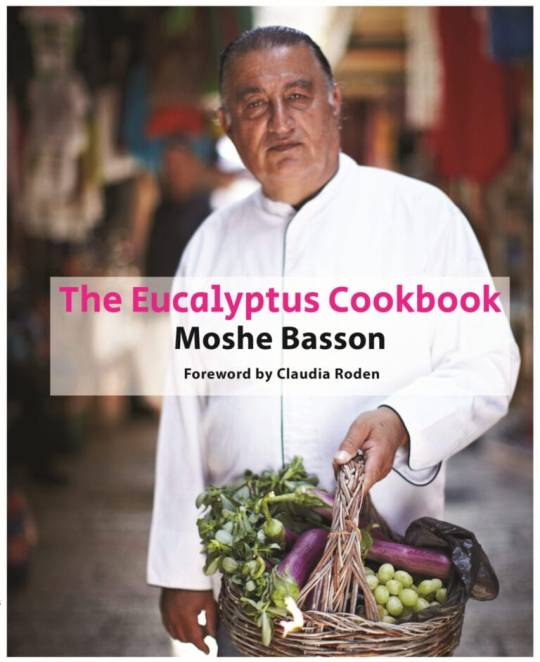
Basson’s own foray into cooking was first inspired by his mother reminiscing about eggs cooked over the embers of a bonfire when the family lived in Iraq. They left for Israel in 1951 following a farhud (pogrom) against the Jewish community.
The young boy managed to recreate the dish with the help of his sister (the first two experiments ended up in exploding eggs!). After picking up the scent of the cooked eggs, his mother hugged him for “bringing her memories to life.”
Other recipes in the book are inspired by his memories of the “wonderful traditional Arabic dishes cooked by our neighbors of my childhood, as well as the Iraqi dishes prepared by my mother, my grandmothers, and my aunts.”
His lifelong study of biblical foods led to dishes such as freekeh (called carmel in the Bible) risotto and bulgur tabbouleh.
In the book he explains how in the story of Absalom rebelling against his father, King David, there is a description of a woman spreading wheat to dry in the sun before cracking it into coarse or fine bulgur. In Arab villages, farmers still use this ancient technique.
But Basson has never been stuck in the past, writes Elana Shap for the Israel 21c website. The ceviche recipes appearing alongside Moroccan fish kebabs with lemon cream and fish shawarma profiteroles are a testament to his welcoming of the next generation in the business.
#iraq#iraqi#uk#baghdad#london#usa#middle east#food#foodie#food photography#recipe#baking#desserts#bread
0 notes
Text
0 notes
Photo
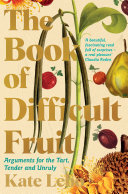
‘A richly researched food history, gentle memoir and left-field recipe book.’ i newspaper ‘A dazzling, thorny new essay collection.’ Samin Nosrat, New York Times ‘A beautiful, fascinating read full of surprises – a real pleasure.’ Claudia Roden ‘Inventive and charming . . . profound and deeply felt.’ Buzzfeed Inspired by twenty-six fruits, essayist, poet and
0 notes
Text
Of all the dishes I’ve made for my family over the years, chicken and potato sofrito is probably the most popular, especially as the kids were growing up.
Sofrito is a Sephardi dish of meat (chicken, usually with the skin on, or beef chunks, seasoned with salt and pepper) and potatoes. It’s cooked for a long time on low heat with very little liquid. Traditionally, the potatoes are deep fried before they’re added to the meat. The occasional onion or root vegetable, such as carrots; squeeze of lemon juice; or pinch of cardamom and turmeric are added, but that’s about it. The slow cooking produces a concentrated sauce — the perfect example of a dish that’s larger than the sum of its simple ingredients.
And just to clarify: Sephardi sofrito should not be confused with the sofrito sauce of tomato, pepper and garlic that’s the base of many dishes in Latino, Spanish and Italian (where it is spelled soffritto) cuisines. Although, as we’ll see, all these versions are somehow related.
The word sofrito comes from the Catalan “sofregit” and Spanish “sofreír,” that mean to lightly fry something. According to Britannica.com, the origins of sofrito can be traced back to Catalonia, to a dish called sofregit. The dish emerged after new vegetables, such as carrots were introduced to the Iberian Peninsula by the Moors. The earliest recipe for sofregit appeared in the Catalan cookbook “Libre de Sent Soví,” circa 1324, and included onions, leeks, garlic and salt pork slowly cooked together.
It’s only after “discovering” the New World that tomatoes and peppers were added to the mix, which resulted in the sauce that’s so popular today. But by that time, the Jews had been expelled from the Iberian Peninsula. With the expulsion from Spain, Sephardi Jews emigrated to North Africa, parts of Europe and the Ottoman Empire, bringing the basic dish of lightly fried root vegetables and meat with them.
Some moved to modern day Israel in the 15th century, and even more during the 16th century after the Spanish Inquisition. They settled mainly in Jerusalem, Tiberias (where they called the dish sifrito), Safed (where it was sometimes known as sofrita) and Hebron. More Sephardi Jews arrived in the 19th century, mainly from Turkey and the Balkans.
“The Beauty Queen of Jerusalem,” a novel (and now a TV show on Netflix) by Sarit Yishai-Levi, follows four generations of the Sephardi Ermoza family in Jerusalem. Sephardi food descriptions are an essential part of the story, and among dishes such as hamin macaroni and biscochos, there is also mention of sofrito.
“My mother Luna passed away shortly before my eighteenth birthday. A year earlier, while the whole family was sitting around the table for lunch as usual and she was serving her famous sofrito with peas and white rice, she sat down on her chair and said, ‘Dio santo, I can’t feel my leg.’”
Matilda Koen-Sarano includes two sofrito recipes from Jerusalem in her Sephardi cookbook “Gizar kon Gozo” (Cooking with Ladino Flavors, written in Hebrew and Ladino). The first is a simple beef shoulder sofrito with nothing but potato, onion, oil, salt and pepper, which is the most popular version of the dish in Israel today. The second is made with chicken thighs, potatoes and many spices and taste agents, such as tomato paste and garlic.
In another Sephardi cookbook from Jerusalem, “The Cook from Agripas St.” (written in Hebrew), author Aviva Ben-Joseph includes three sofrito recipes. They’re all, in fact, different types of beef stews cooked with very little liquid on low heat; none of them contain potatoes or other vegetables.
Sofrito was also eaten by Sephardi Jews in Egypt. Cookbook author and food historian Claudia Roden includes two Egyptian sofrito recipes in “The Book of Jewish Food” from her own family: one with chicken and one with veal. She writes that the potatoes were originally deep fried before they were added to the pot with the meat, but says that her mother switched to tiny boiled new potatoes when the family moved to London. (The Jewish community as a whole left Egypt after the establishment of the state of Israel.)
In my house, sofrito means warm, satisfying homecoming. My version is as minimal as can be, and really easy to prepare. I use skinless, boneless chicken thighs, potatoes, oil, turmeric, salt and pepper, but you can use any cut of meat and add other root vegetables to the potatoes. Since both the chicken and the potatoes need the same cooking time, about one hour, I can fry the potatoes in the same dish as the chicken, adding even more flavor to the potatoes, and saving a dirty dish. I hope you’ll give it a go; maybe it will become your own family’s comfort dish, too.
7 notes
·
View notes
Text
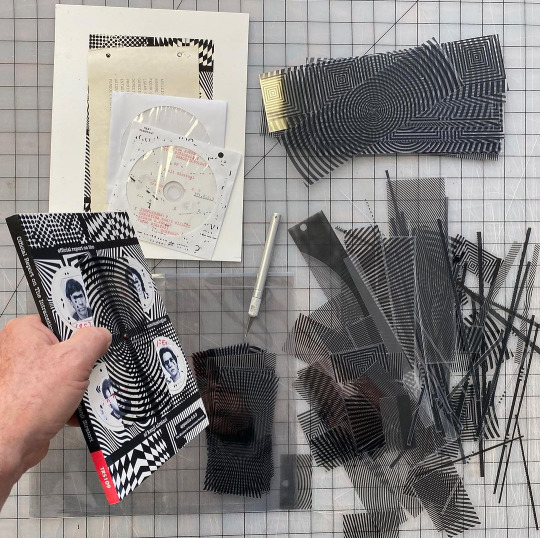
The realization process of hyper-annotation novel in the domain of Time Released Sound.
AUTHORS: Rosaire Appel, Louis Armand, David Barrick, Gary Barwin, Steve Beard, Gregory Betts, Christian Bök, Mike Bonsall, Peter Bouscheljong, Maria Chenut, Shane Jesse Christmas, Roy Christopher, Tabasco "Ralph" Contra, Mike Corrao, R.J. Dent, Paul Di Filippo, Zak Ferguson, Colin Herrick, S.C. Hickman, Maxwell Hyatt, Justin Isis, Andrew Joron, Chris Kelso, Phillip Klingler, Adam Lovasz, Daniel Lukes, Ania Malinowska, Claudia Manley, Ryota Matsumoto, Michael Mc Aloran, Andrew McLuhan, Jeff Noon, Jim Osman, Suarjan Prasai, Tom Prime, David Leo Rice, Virgilio Rivas, David Roden, B.R. Yeager, Andrej Shakowski, Aaron Schneider, Gary J. Shipley, Kenji Siratori, Sean Smith, Kristine Snodgrass, Sean Sokolov, Alan Sondheim, Simon Spiegel, Henry Adam Svec, Jeff VanderMeer, R.G. Vasicek, Andrew C. Wenaus, William Wenaus, Eileen Wennekers, Christina Marie Willatt, Saywrane Alfonso Williams, D. Harlan Wilson, Andrew Wilt
2 notes
·
View notes